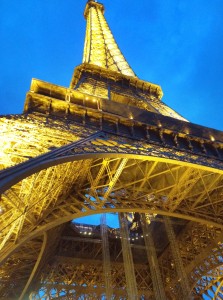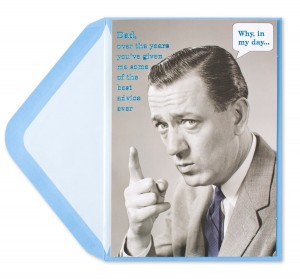“Would I be considered an Asian-American actor?” asked my stage-struck 11 year-old thespian son after we listened to an NPR story about a Filipino play—notable because of the scarcity of Asian-American plays (and roles) out there.
“Probably. . . do you consider yourself Asian-American?”
“No, not really.”
“Do you consider yourself White?”
“No.”
“What do you consider yourself?”
He smiled a little sheepishly, “Hapa-Haole.”
In Hawaii, folks of mixed ancestry are called “Hapa.” “Hapa” means half. “Haole” means “without breath,” what Hawaiians called Whites because they didn’t seem to have a soul.
OK, that doesn’t sound good, but at this point in Hawaii, it’s just what Whites are called. . . Haole. 99.9% of Haoles call themselves Haole. And I suspect the .1% who don’t just moved from the Mainland and may be struggling with the fact that they have to call themselves anything at all.
While IMHO there’s no positive or negative spin to the label “Haole,” there’s an exceedingly positive spin to the label “Hapa.” In Hawaii, the more mixed your ancestry, the better you’re seen – probably because there’s a high chance you’re more beautiful than pure-bloods. In school kids would brag, “I’m part Hawaiian, Chinese, Japanese, Scottish, French, Dutch. . .” The more nationalities mentioned, the more impressed their listeners. (I tried to make my Han ancestry more interesting, “I’m a quarter Pekinese, Fukienese, Cantonese and Shanhainese with perhaps a touch of Mongolian.” But that never seemed to impress anyone.)
Hapa is so cool that I’ve had friends tell me I’m lucky I’ve borne Hapa kids, as if they’re qualitatively better than pure-bloods.
So when my son identified himself as Hapa-Haole, my heart felt both a pang and joy at the same time.
A pang because he didn’t pronounce “Hapa-Haole” correctly. Mainland born and bred, his Hawaiian pronunciation was atrocious. Yet there’s no better term in Boston for who he is, and so he owns a really positive term from the islands where his mother grew up.
Joy because I’m relieved that thus far, he doesn’t feel like he needs to reject either side of his ancestry. So far at least, he seems content to be both Chinese and Scottish/English, and that feels like a good thing.
Years ago, when I should have been researching interracial friendships for my dissertation, for a break I decided to look up studies on bi-racial ethnic identity. One study I found was sobering—it claimed that there were 5 ways bi-racial kids responded to their bi-racial identity, and 4 were extremely negative. The only positive response wasn’t really a response—it was growing up in Hawaii, the only place where bi-racial or multi-racial identity is positive.
My Haole brother-in-law, with 3 hapa kids of his own, also researched bi-racial identity and found that part of the challenge for bi-racial kids is that both parents are mono-ethnic and therefore don’t know how to help their kids negotiate their bi-racial reality.
Already, my daughters have expressed frustration that certain forms force them to choose between Asian and White. How do they choose and why should they? My son is just realizing that being Asian-American, or even more, Hapa, may shrink his already negligible chance of making it to Broadway.
But these past days I’m struck by how safe the racial identity question is for my kids. That doesn’t mean it’s easy, but most probably no one will attack them because of who they perceive them to be. At times, they might even “pass” as White. Trayvon Martin, the Florida teen killed for “walking while Black” carrying only Skittles and iced tea, didn’t have the same option.
Most Blacks are also Hapa, their ancestry mixed with White and Native blood, yet for most of American history they couldn’t claim a multi-racial identity–in some states one drop of African blood meant you couldn’t be anything but Black.
How can we train our eyes to see beyond the outside and let folks be who they are on the inside? Can young Hapa-Haole boys aspire to be Broadway actors? Or even more importantly, can all young Black men someday know they’ll walk home safely, armed only with a pack of Skittles?











